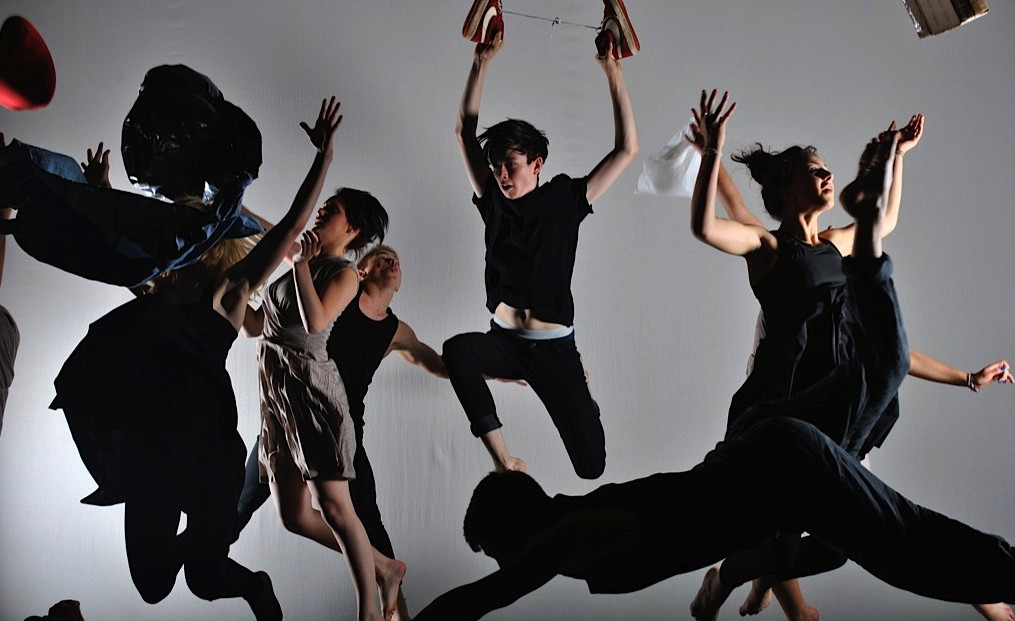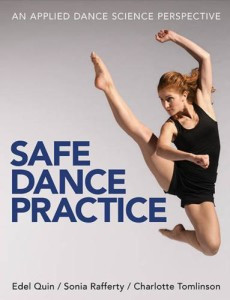Is It Safe To Dance? Absolutely! Dancing is a fantastic way to express yourself, stay active, and connect with others, and ten-dance.com is here to ensure you do it safely and effectively. By understanding and implementing safe dance practices, you can minimize injury risks and maximize the enjoyment and longevity of your dance journey. Let’s explore how to make your dance experience both thrilling and secure, focusing on proper techniques, injury prevention, and creating a supportive environment.
1. Understanding Safe Dance Practice
Safe dance practice involves creating an environment where dancers of all ages and skill levels can thrive while minimizing the risk of injury. It’s not about restricting creativity but rather empowering dancers with the knowledge and tools to train and perform at their best.
What is Safe Dance Practice?
Safe dance practice encompasses various elements, including environmental factors, physical conditioning, and psychological well-being. According to research from Safe in Dance International (SiDI), implementing these principles allows dancers to sustain long, healthy careers while continuously pushing artistic boundaries.
Why is Safe Dance Practice Important?
Safe dance practice is vital for several reasons:
- Injury Prevention: Reduces the risk of common dance-related injuries.
- Enhanced Performance: Improves technique and physical capabilities.
- Long-Term Sustainability: Allows dancers to enjoy dancing for many years.
- Psychological Well-being: Fosters a positive and supportive training environment.
2. Who Should Practice Safe Dance?
Safe dance practice is for everyone, regardless of age, skill level, or dance style.
Is Safe Dance Just for Professionals?
No, safe dance is not just for professionals; it benefits dancers of all levels. According to the American Academy of Sports Medicine, implementing safe practices from the beginning can help recreational dancers build a strong foundation and prevent injuries.
Is Safe Dance Just for Certain Ages?
No, safe dance practices are essential for all age groups. The developmental stages of a dancer’s body from childhood through adulthood require different approaches to training and recovery.
Is Safe Dance Important for Teachers and Choreographers?
Yes, safe dance practices are crucial for teachers and choreographers. They have a responsibility to create a safe and supportive environment that promotes the well-being of their students and dancers.
3. Key Principles of Safe Dance Practice
The principles of safe dance practice address the interplay of environmental, physical, and psychological factors that can impact dancing.
What are Environmental Principles in Safe Dance?
Environmental principles involve creating a safe and supportive physical space for dancing.
What Makes an Ideal Dance Environment?
An ideal dance environment includes:
- Sprung Floor: Reduces impact and stress on joints.
- Appropriate Surface: Prevents slips and falls.
- Adequate Temperature: Avoids overheating or chilling of muscles.
- Sufficient Space: Allows dancers to move freely without collisions.
What if the Dance Space Is Not Ideal?
If the dance space is not ideal, you can take steps to minimize risks:
- Reduce or eliminate jumps on hard floors.
- Wear layers of clothing to adjust to temperature changes.
- Remove obstacles from the dance space.
- Conduct risk assessments and have injury reporting procedures in place.
What are Physical Principles in Safe Dance?
Physical principles involve understanding how the body works when dancing and how to care for it properly.
What are Effective Warm-Up and Cool-Down Techniques?
Effective warm-up and cool-down techniques prepare the body for activity and aid in recovery:
- Warm-Up: Increases blood flow, improves flexibility, and prepares muscles for activity. (Example: Light cardio followed by dynamic stretching)
- Cool-Down: Gradually reduces heart rate, promotes muscle relaxation, and prevents stiffness. (Example: Static stretching and light movement)
What is Good Functional Alignment?
Good functional alignment ensures the body is properly aligned to minimize stress and maximize efficiency.
- Maintaining a neutral spine.
- Engaging core muscles.
- Distributing weight evenly.
What Types of Stretching Are Most Productive?
Different types of stretching serve different purposes:
- Dynamic Stretching: Improves range of motion and prepares muscles for activity. (Example: Leg swings, arm circles)
- Static Stretching: Increases flexibility and promotes relaxation. (Example: Holding a hamstring stretch)
- Proprioceptive Neuromuscular Facilitation (PNF) Stretching: Enhances flexibility through muscle contractions and assisted stretching.
How Can Dancers Balance Workload and Rest?
Balancing workload and rest is crucial to prevent overtraining and injury.
- Schedule Regular Rest Days: Allows the body to recover and rebuild.
- Incorporate Active Recovery: Light activities that promote blood flow and reduce muscle soreness. (Example: Gentle swimming, walking)
- Listen to Your Body: Pay attention to signs of fatigue or pain and adjust training accordingly.
What Role Does Nutrition Play in Safe Dance?
Proper nutrition fuels the body and supports optimal performance.
- Balanced Diet: Provides essential nutrients for energy, muscle repair, and overall health.
- Hydration: Maintains fluid balance and prevents dehydration.
- Supplements: May be necessary to address specific nutritional deficiencies. (Consult with a healthcare professional)
What are Psychological Principles in Safe Dance?
Psychological principles involve creating a positive and supportive learning environment that promotes emotional well-being.
How Do You Foster Mutually Respectful Relationships?
Fostering mutually respectful relationships between dancers and leaders is essential for creating a positive environment.
- Open Communication: Encourage open and honest communication.
- Active Listening: Listen to and value the perspectives of others.
- Empathy: Understand and share the feelings of others.
How Do You Use Clear Communication?
Clear communication ensures instruction and feedback are framed positively and appropriately.
- Positive Framing: Focus on what dancers are doing well and provide constructive feedback.
- Specific Feedback: Provide clear and specific suggestions for improvement.
- Encouragement: Offer encouragement and support.
How Can You Emphasize Effort and Progress?
Emphasizing effort and progress over ability and talent can create a growth mindset.
- Focus on Learning: Celebrate effort and progress, not just outcomes.
- Value Mistakes: Encourage dancers to learn from mistakes.
- Avoid Comparison: Discourage comparison with others.
How Do You Promote Positive Attitudes?
Promoting positive attitudes towards oneself and other dancers enhances self-confidence and emotional well-being.
- Self-Compassion: Encourage dancers to be kind and understanding towards themselves.
- Positive Self-Talk: Promote positive and encouraging self-talk.
- Gratitude: Encourage dancers to appreciate their strengths and accomplishments.
4. Responding to Injuries
Despite best efforts, injuries can occur. Knowing how to respond is crucial.
What is the PRICED Protocol?
PRICED is a simple procedure to follow immediately after an injury:
- Protect: Protect the injured area from further harm.
- Rest: Avoid using the injured area.
- Ice: Apply ice to reduce swelling and pain.
- Compression: Use a bandage to compress the injured area.
- Elevation: Elevate the injured area above the heart.
- Diagnosis: Seek professional medical advice.
When Should You Seek Professional Treatment?
Seek professional treatment if:
- The pain is severe.
- You cannot put weight on the injured area.
- There is significant swelling or bruising.
- The injury does not improve after a few days of self-care.
 Group of female ballet dancers standing in pointe position
Group of female ballet dancers standing in pointe position
5. Adapting Safe Dance Practice
Tailor dance sessions to the age and ability of the dancers.
How Does Age Affect Safe Dance Practice?
Age affects how the body responds to training and recovery.
- Children: Require age-appropriate training that focuses on developing fundamental movement skills.
- Adults: Can handle more intense training but need to be mindful of overuse injuries.
- Older Adults: May need to modify exercises to accommodate age-related changes in flexibility and strength.
How Does Ability Affect Safe Dance Practice?
Ability affects the intensity and complexity of training.
- Beginners: Need a gradual introduction to dance with a focus on basic techniques and conditioning.
- Intermediate Dancers: Can progress to more challenging choreography and training exercises.
- Advanced Dancers: Require specialized training that addresses their specific needs and goals.
How Do You Minimize the Risk of Overwork and Fatigue?
Minimizing overwork and fatigue involves careful planning and monitoring.
- Progress Gradually: Increase training intensity and duration gradually.
- Monitor Fatigue Levels: Pay attention to signs of fatigue and adjust training accordingly.
- Ensure Adequate Sleep: Aim for 7-9 hours of sleep per night.
6. Incorporating Safe Practice into Your Dance Routine
Safe practice isn’t a set of rules but a way to minimize injury risk, optimize potential, and prolong participation.
How Can Recreational Dancers Benefit from Safe Practice?
Recreational dancers can benefit from safe practice by:
- Enjoying dancing for fun and social connection.
- Preventing injuries that could sideline them.
- Improving their technique and overall well-being.
How Can Advanced Dancers Benefit from Safe Practice?
Advanced dancers can benefit from safe practice by:
- Pushing their limits safely and effectively.
- Sustaining long and successful careers.
- Becoming role models for younger dancers.
What is Safe in Dance International (SiDI)?
Safe in Dance International (SiDI) is an organization that promotes safe dance practice education and development worldwide.
What Resources Does SiDI Provide?
SiDI provides:
- Educational resources.
- Workshops and training programs.
- Accreditation for dance teachers and schools.
7. Practical Tips for Implementing Safe Dance
Here are practical tips for incorporating safe dance practices into your routine, ensuring you can enjoy dancing for years to come.
Ensuring a Safe Dance Environment
Creating the right environment is the first step in safe dance. Here’s how to optimize your dance space:
Floor Safety
- Sprung Floors: These are ideal as they absorb impact, reducing the risk of joint injuries.
- Non-Slip Surfaces: Ensure the floor isn’t too slippery or sticky to prevent falls.
- Regular Maintenance: Keep the floor clean and free of debris.
Temperature Control
- Optimal Temperature: Maintain a temperature that’s neither too hot nor too cold.
- Ventilation: Ensure good airflow to prevent overheating.
- Layered Clothing: Wear layers that can be adjusted to maintain a comfortable body temperature.
Space Management
- Adequate Space: Provide enough room for dancers to move freely without colliding.
- Obstacle-Free Zone: Remove any obstacles that could cause trips or falls.
- Mirror Placement: Position mirrors strategically to aid in self-assessment of technique.
Warm-Up and Cool-Down Essentials
These routines prepare your body for activity and aid in recovery.
Warm-Up Exercises
- Cardio: Start with light cardio to increase blood flow (5-10 minutes).
- Dynamic Stretching: Perform dynamic stretches to improve range of motion (10-15 minutes). (Example: Arm circles, leg swings)
- Joint Mobilization: Include exercises to mobilize joints (5 minutes). (Example: Ankle rotations, wrist circles)
Cool-Down Exercises
- Static Stretching: Hold static stretches to promote muscle relaxation (10-15 minutes). (Example: Hamstring stretch, quad stretch)
- Foam Rolling: Use foam rolling to release muscle tension (5-10 minutes).
- Deep Breathing: Practice deep breathing to lower heart rate and promote relaxation (5 minutes).
Technique and Alignment
Proper technique and alignment are crucial for preventing injuries and maximizing performance.
Core Engagement
- Proper Posture: Maintain a neutral spine and engage core muscles.
- Pelvic Alignment: Ensure proper pelvic alignment to support the spine.
- Muscle Balance: Develop balanced strength in core muscles.
Joint Stability
- Knee Alignment: Keep knees aligned over toes to prevent knee injuries.
- Ankle Stability: Strengthen ankle muscles to improve stability.
- Hip Stability: Engage hip muscles to support proper alignment.
Movement Control
- Controlled Movements: Perform movements with control and precision.
- Avoid Overextension: Be mindful of hyperextension in joints.
- Listen to Your Body: Pay attention to pain or discomfort and adjust movements accordingly.
Training and Conditioning
A well-rounded training program should include strength, flexibility, and endurance exercises.
Strength Training
- Balanced Program: Include exercises that target all major muscle groups.
- Progressive Overload: Gradually increase the intensity and duration of workouts.
- Proper Form: Focus on proper form to prevent injuries.
Flexibility Training
- Regular Stretching: Incorporate regular stretching to maintain and improve flexibility.
- Variety of Stretches: Include a variety of static, dynamic, and PNF stretches.
- Listen to Your Body: Avoid pushing beyond a comfortable range of motion.
Endurance Training
- Cardiovascular Exercise: Engage in regular cardiovascular exercise to improve endurance.
- Interval Training: Include interval training to improve both aerobic and anaerobic capacity.
- Cross-Training: Incorporate cross-training activities to prevent overuse injuries.
Nutrition and Hydration
Proper nutrition and hydration are essential for fueling your body and supporting optimal performance.
Balanced Diet
- Macronutrients: Consume a balanced diet with adequate protein, carbohydrates, and fats.
- Micronutrients: Ensure you are getting enough vitamins and minerals.
- Whole Foods: Focus on whole, unprocessed foods.
Hydration
- Water Intake: Drink plenty of water throughout the day.
- Electrolytes: Replenish electrolytes during and after intense workouts.
- Avoid Sugary Drinks: Limit sugary drinks that can lead to dehydration.
Recovery Strategies
- Active Recovery: Engage in light activities to promote blood flow and reduce muscle soreness.
- Massage: Get regular massages to release muscle tension.
- Sleep: Prioritize sleep to allow your body to recover and rebuild.
Psychological Well-being
A positive mindset and supportive environment can enhance your dance experience.
Stress Management
- Mindfulness: Practice mindfulness to reduce stress and improve focus.
- Relaxation Techniques: Use relaxation techniques like deep breathing or meditation.
- Time Management: Manage your time effectively to reduce stress.
Positive Self-Talk
- Encouraging Words: Use positive and encouraging self-talk to build confidence.
- Focus on Strengths: Focus on your strengths and accomplishments.
- Avoid Negative Thoughts: Challenge negative thoughts and replace them with positive ones.
Supportive Environment
- Positive Relationships: Build positive relationships with fellow dancers and instructors.
- Open Communication: Communicate openly and honestly about your needs and concerns.
- Seek Support: Don’t hesitate to seek support from friends, family, or professionals.
 A dancer stretching her legs on a wooden barre
A dancer stretching her legs on a wooden barre
8. Resources for Safe Dance Practice
Many resources are available to help dancers learn about and implement safe dance practices.
Safe in Dance International (SiDI)
SiDI provides resources, workshops, and accreditation for dance teachers and schools.
- Website: http://www.safeindance.com/
- Educational Materials: Access articles, videos, and guides on safe dance practices.
- Workshops: Attend workshops to learn from experts in the field.
International Association for Dance Medicine and Science (IADMS)
IADMS is a professional organization dedicated to improving the health and well-being of dancers.
- Website: https://www.iadms.org/
- Conferences: Attend conferences to network with professionals and learn about the latest research.
- Publications: Read research articles and publications on dance medicine and science.
Dance Teacher Associations
Many dance teacher associations offer resources and training on safe dance practices.
- National Dance Education Organization (NDEO): https://www.ndeo.org/
- Royal Academy of Dance (RAD): https://www.royalacademyofdance.org/
- Cecchetti Council of America (CCA): https://www.cecchettiusa.org/
9. Latest Trends in Safe Dance Practice
Staying updated with the latest trends can enhance your understanding and implementation of safe dance practices.
Integration of Technology
Wearable technology and apps are used to monitor dancers’ physical and mental health.
- Heart Rate Monitors: Track heart rate and exertion levels during training.
- Motion Sensors: Analyze movement patterns and identify potential risks.
- Mental Health Apps: Provide tools for stress management and mindfulness.
Personalized Training Programs
Training programs are tailored to individual needs and goals.
- Genetic Testing: Identify genetic predispositions to injuries.
- Biomechanical Analysis: Assess movement patterns and identify areas for improvement.
- Individualized Conditioning: Develop customized strength and flexibility programs.
Holistic Approaches
A holistic approach integrates physical, mental, and emotional well-being.
- Mind-Body Practices: Incorporate practices like yoga and Pilates.
- Nutritional Counseling: Provide guidance on optimal nutrition for dancers.
- Mental Health Support: Offer access to mental health professionals.
10. Frequently Asked Questions (FAQs)
Here are some frequently asked questions about safe dance practice.
Is It Safe to Dance with a Pre-Existing Injury?
Dancing with a pre-existing injury requires caution and professional guidance. Consult with a healthcare provider or physical therapist before resuming dance activities.
How Can I Prevent Common Dance Injuries?
You can prevent common dance injuries by following safe dance practices, including proper warm-up and cool-down, good technique, and balanced training.
What Are the Best Stretches for Dancers?
The best stretches for dancers include dynamic stretches for warm-up and static stretches for cool-down, focusing on major muscle groups used in dance.
How Important Is Nutrition for Dance Performance?
Nutrition is crucial for dance performance, providing the energy and nutrients needed for training, recovery, and overall health.
How Can I Improve My Flexibility for Dance?
You can improve your flexibility for dance by incorporating regular stretching exercises into your routine and using techniques like PNF stretching.
What Should I Do If I Experience Pain While Dancing?
If you experience pain while dancing, stop the activity immediately and assess the situation. If the pain is severe or persistent, seek professional medical advice.
How Can I Create a Safe Dance Environment at Home?
Creating a safe dance environment at home involves ensuring a sprung or cushioned floor, adequate space, and a comfortable temperature.
What Are the Psychological Benefits of Safe Dance Practice?
The psychological benefits of safe dance practice include reduced stress, improved self-confidence, and a positive and supportive learning environment.
How Can Dance Teachers Promote Safe Dance Practices?
Dance teachers can promote safe dance practices by providing proper instruction, creating a supportive environment, and emphasizing the importance of injury prevention.
Where Can I Find More Information About Safe Dance Practices?
You can find more information about safe dance practices on ten-dance.com, the Safe in Dance International (SiDI) website, and through dance teacher associations. Address: 60 Lincoln Center Plaza, New York, NY 10023, United States. Phone: +1 (212) 769-7000.
Dancing is a rewarding activity that offers numerous physical and mental health benefits. By prioritizing safe dance practices, you can minimize the risk of injury, optimize your performance, and enjoy dancing for many years to come. Remember to listen to your body, seek professional guidance when needed, and create a supportive environment that promotes your well-being.
Ready to take your dance journey to the next level? Explore ten-dance.com for a wealth of resources, including online lessons, local classes, and a vibrant community of dance enthusiasts. Discover how to dance safely, effectively, and joyfully with us.

